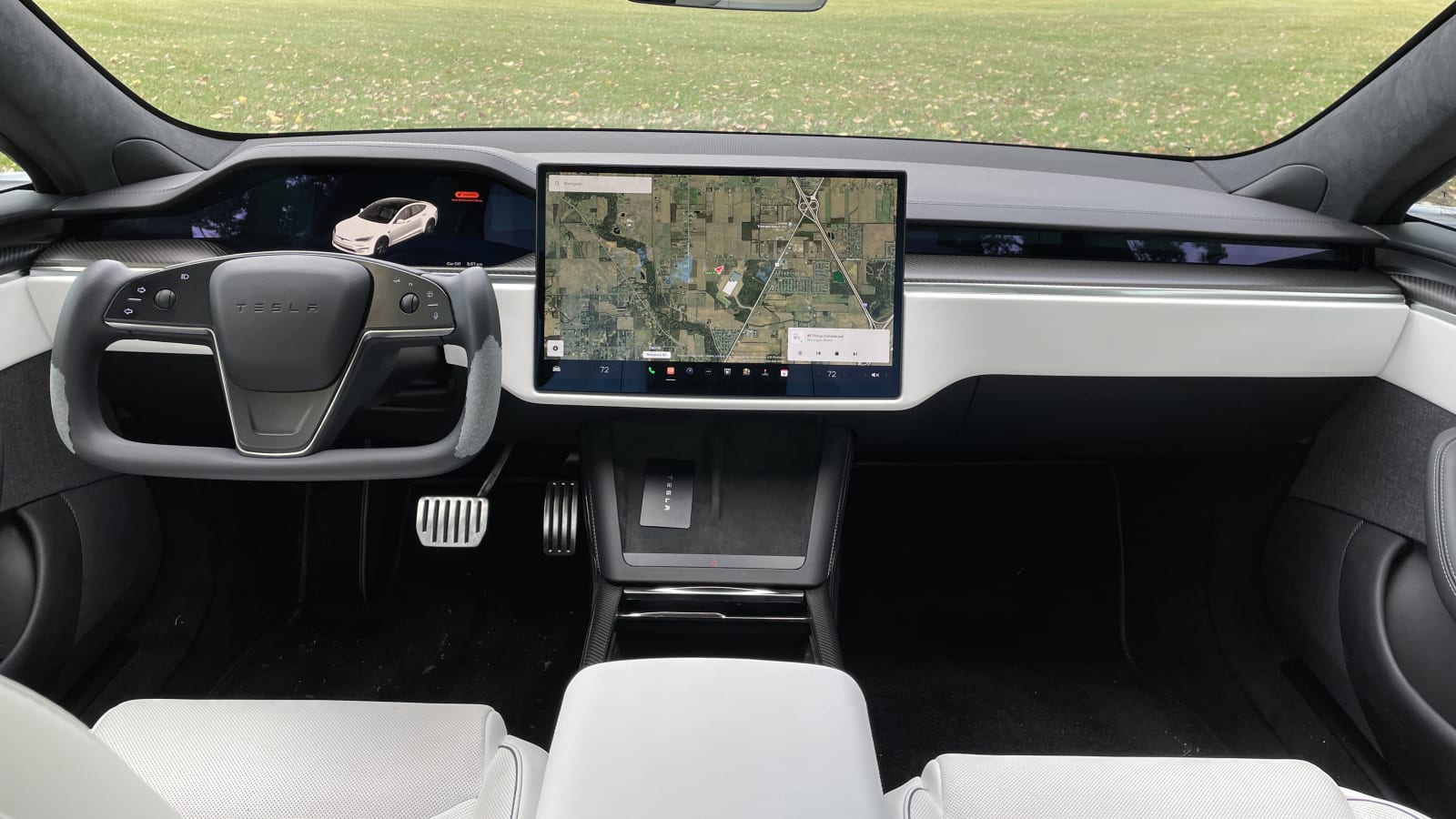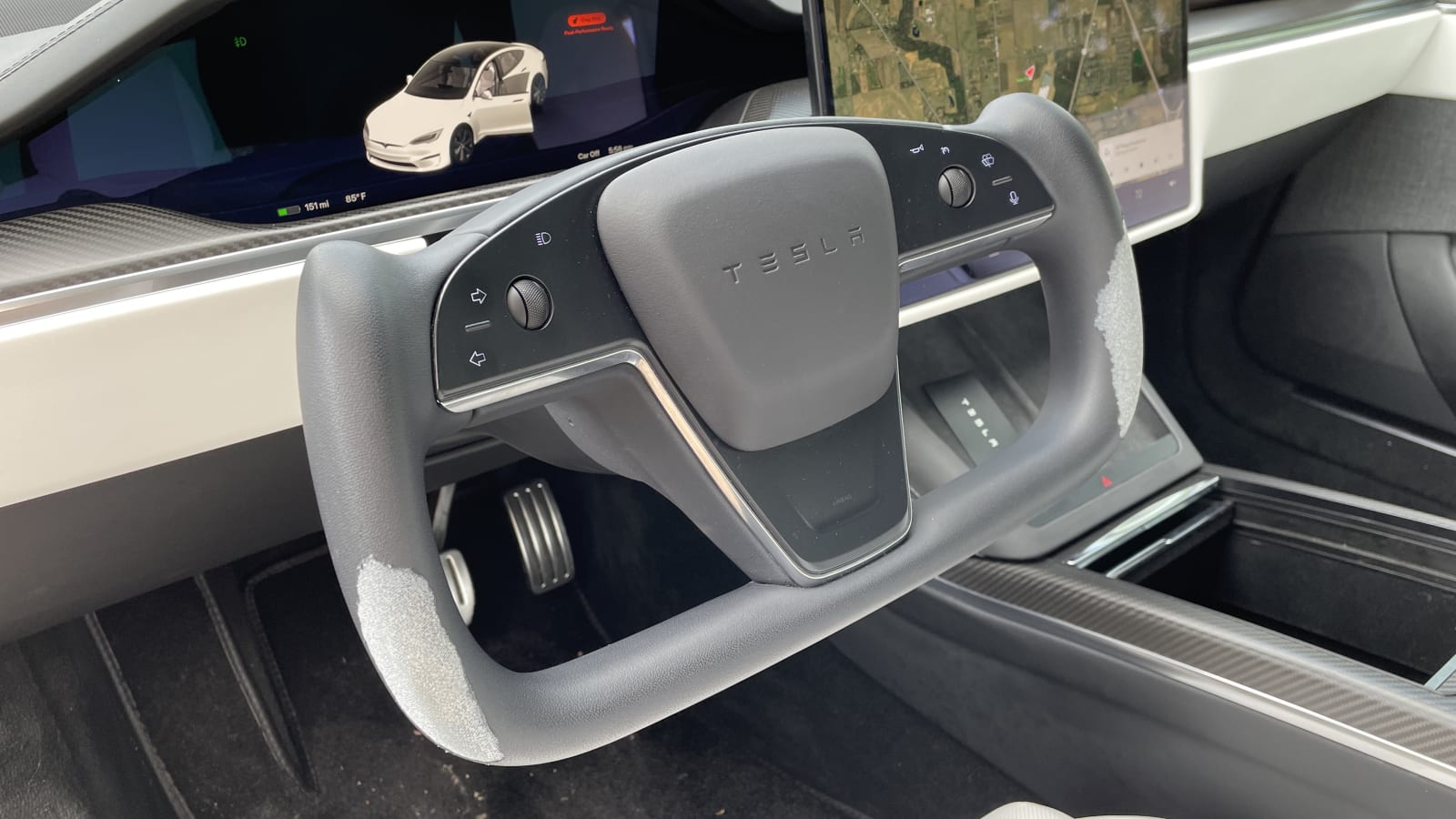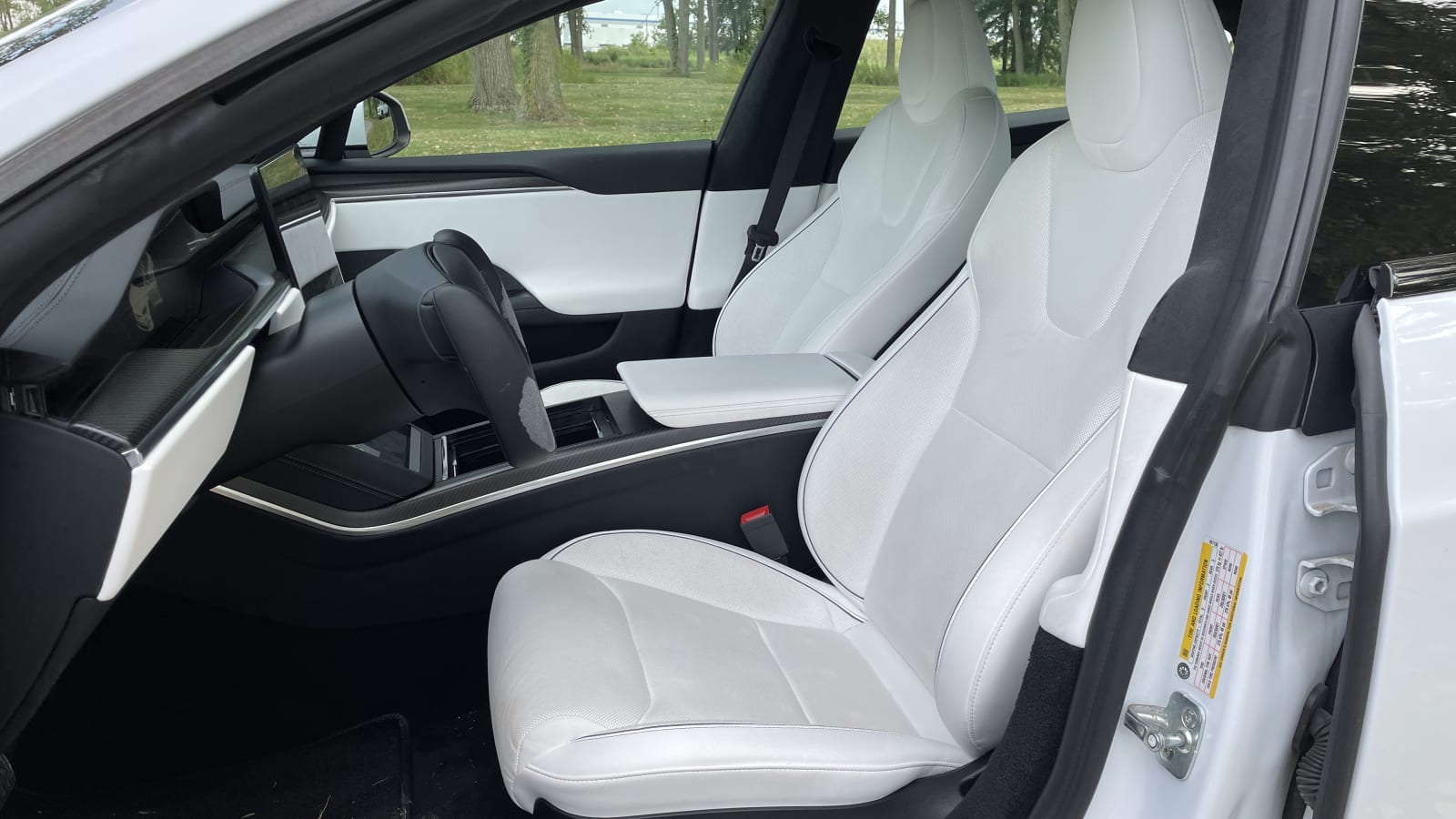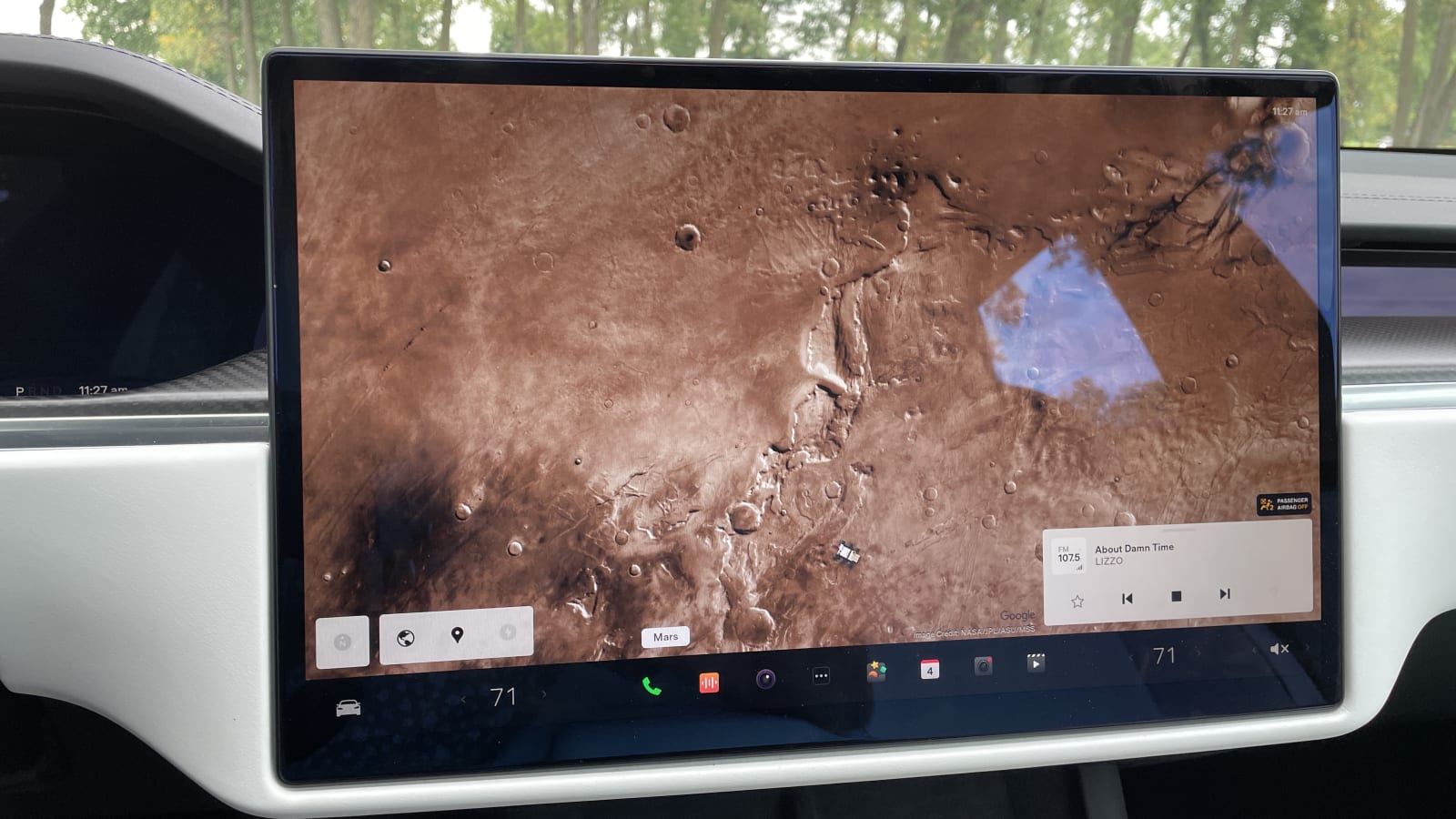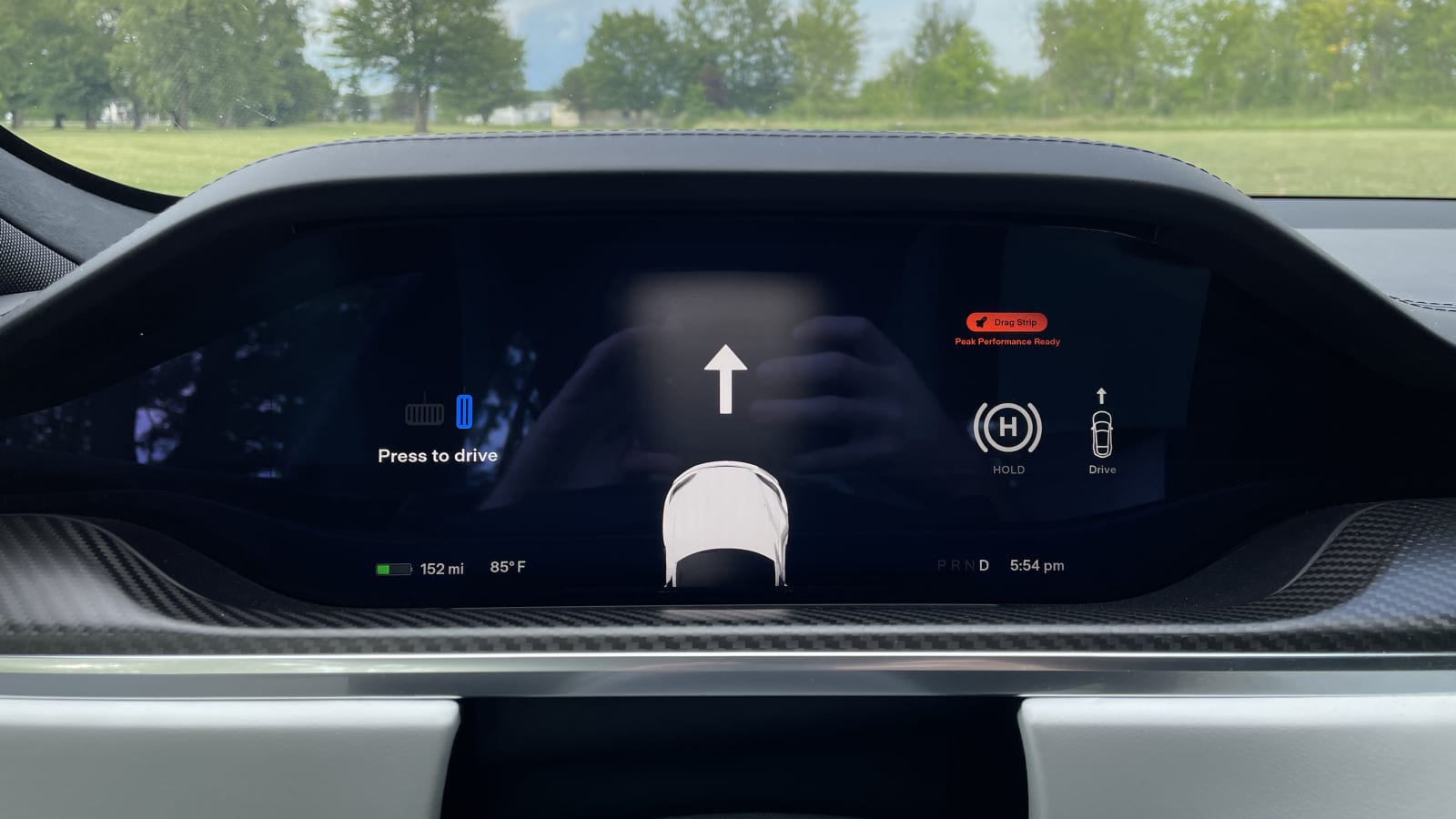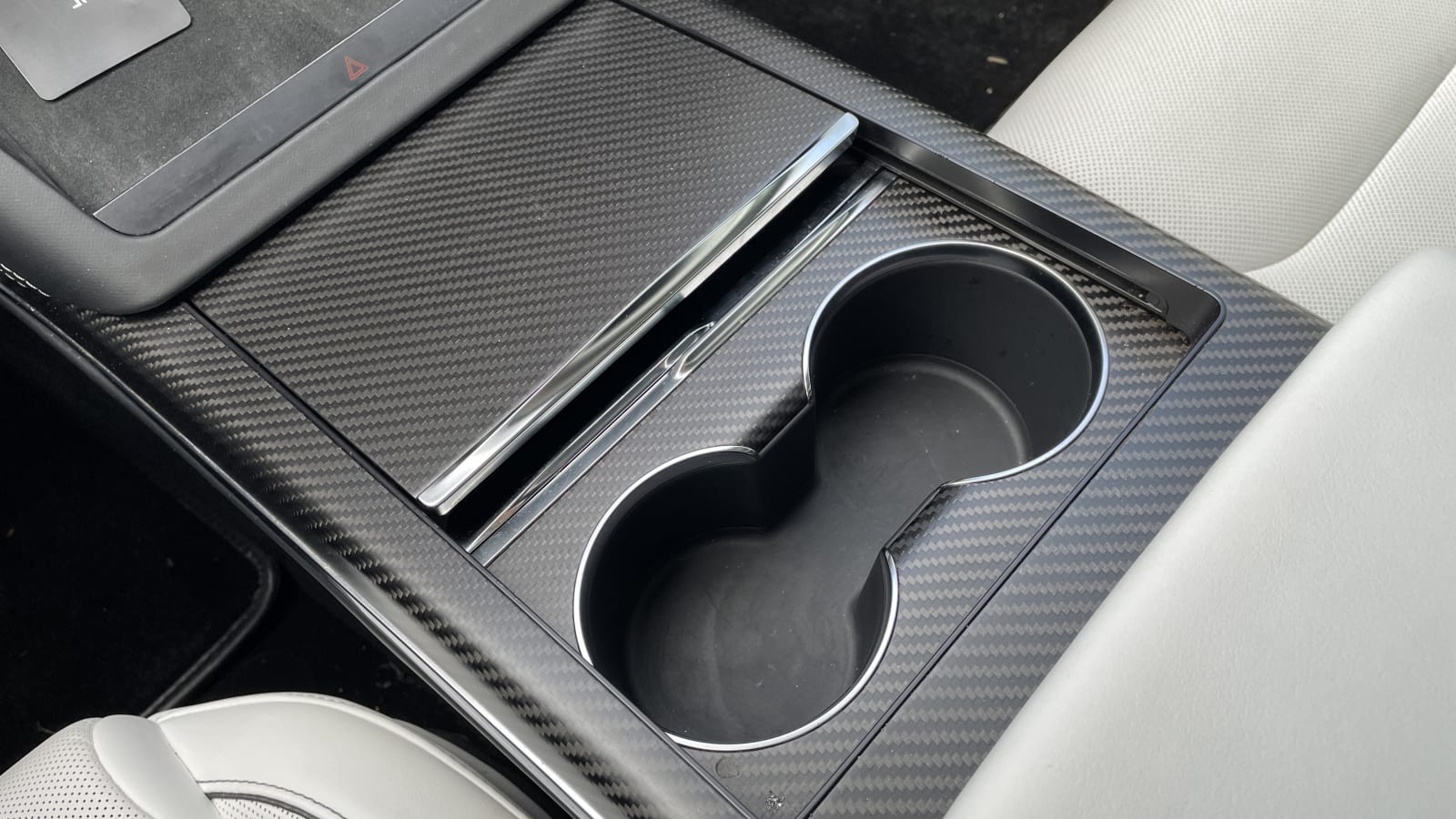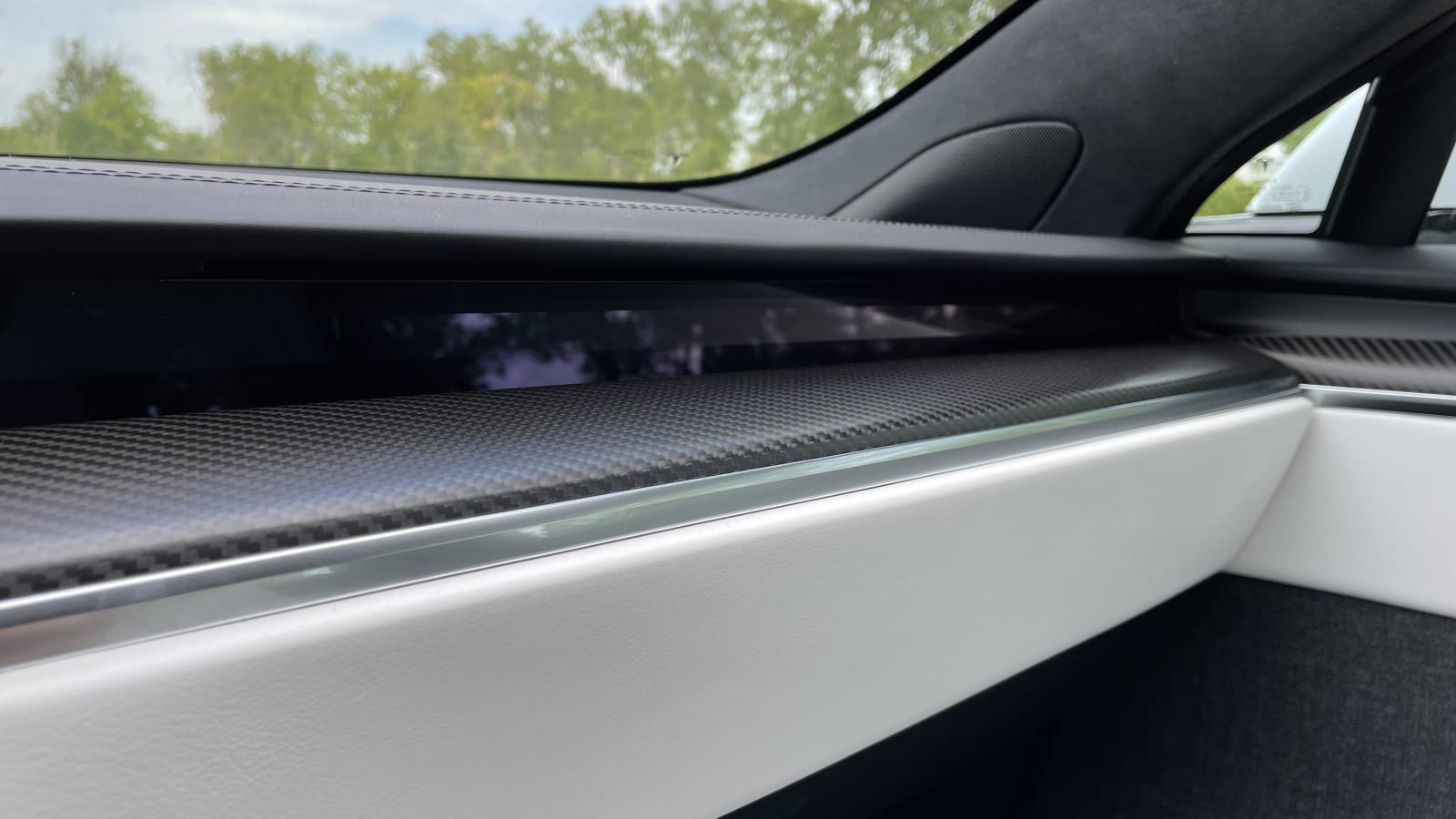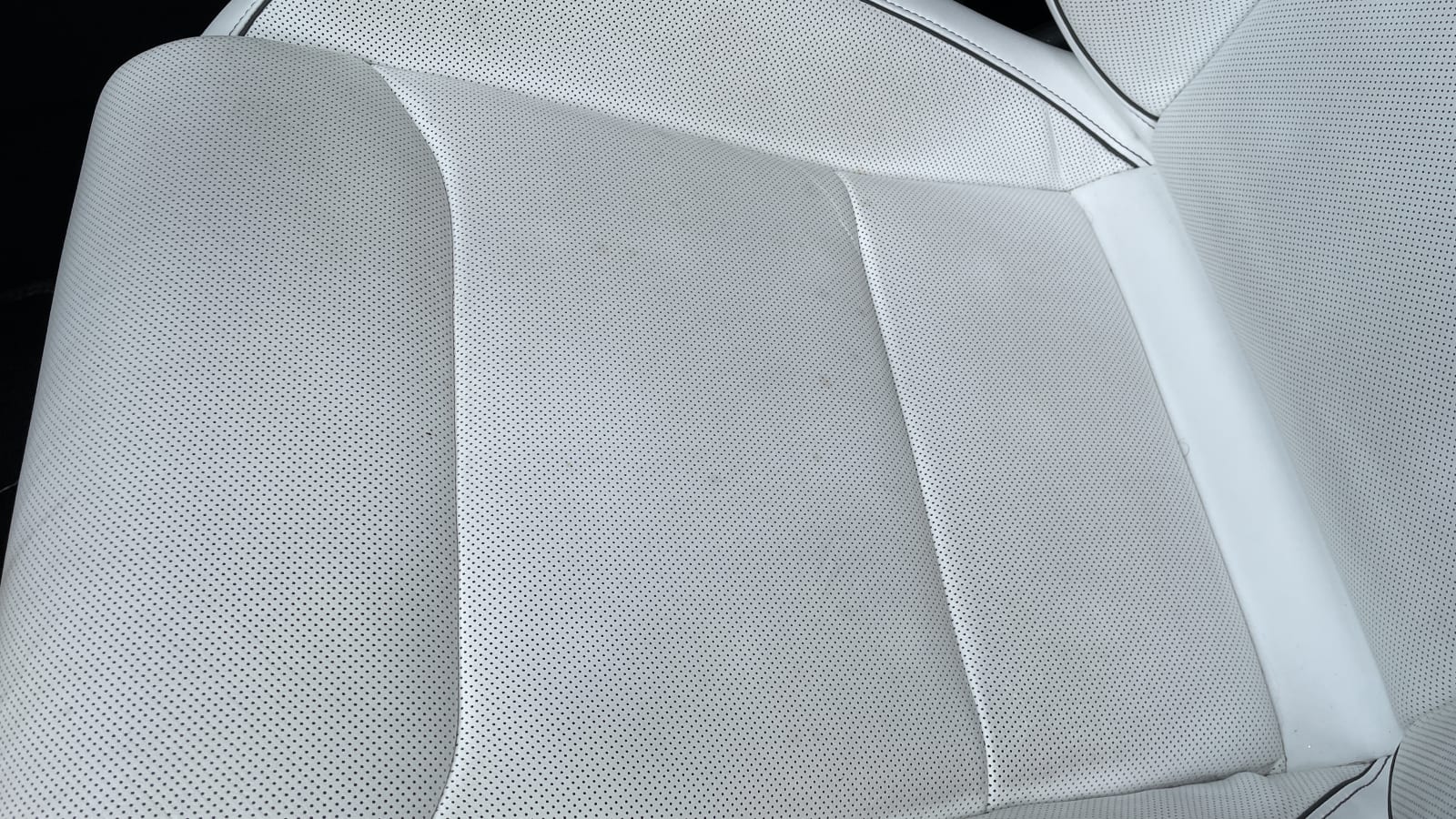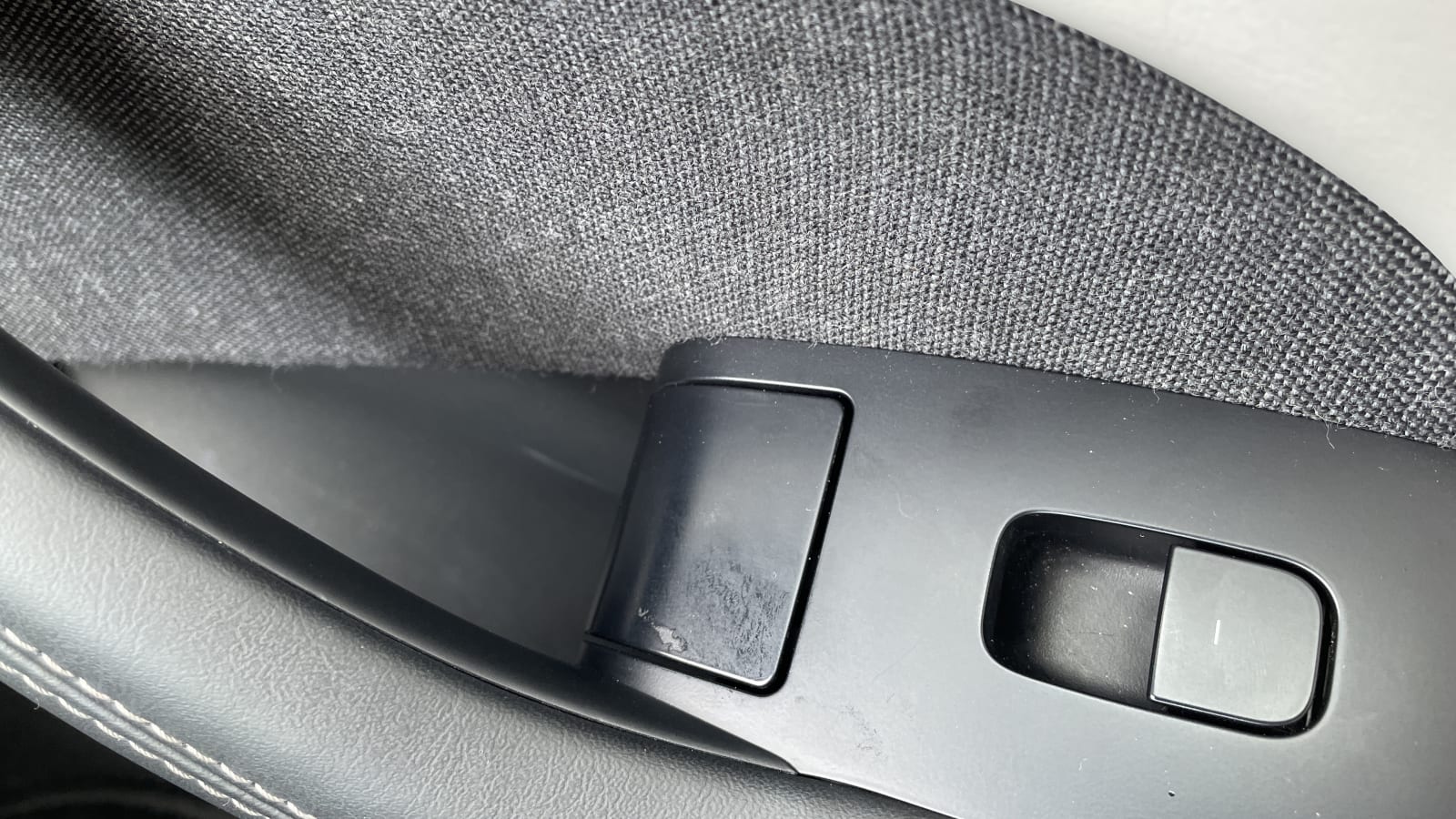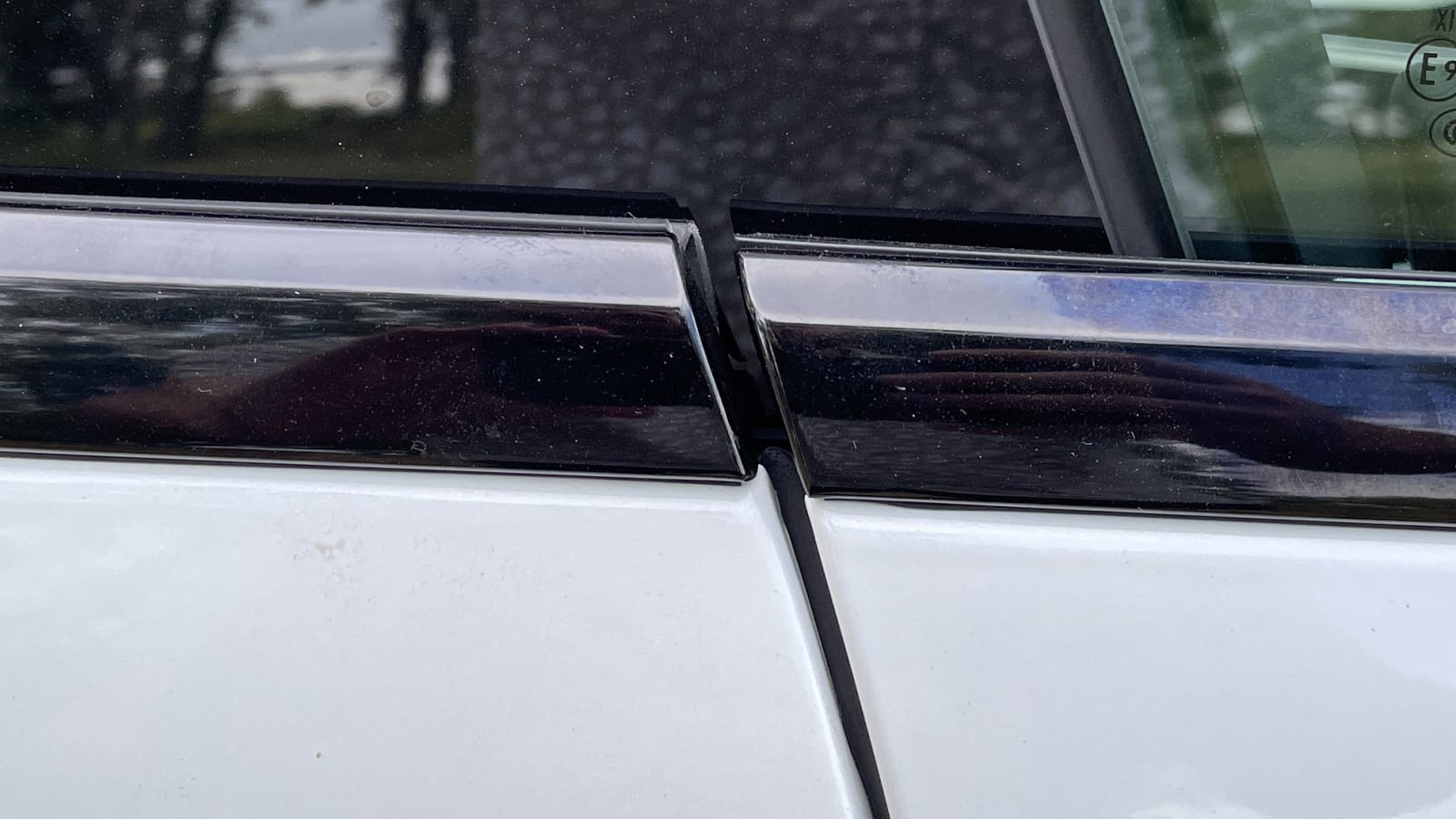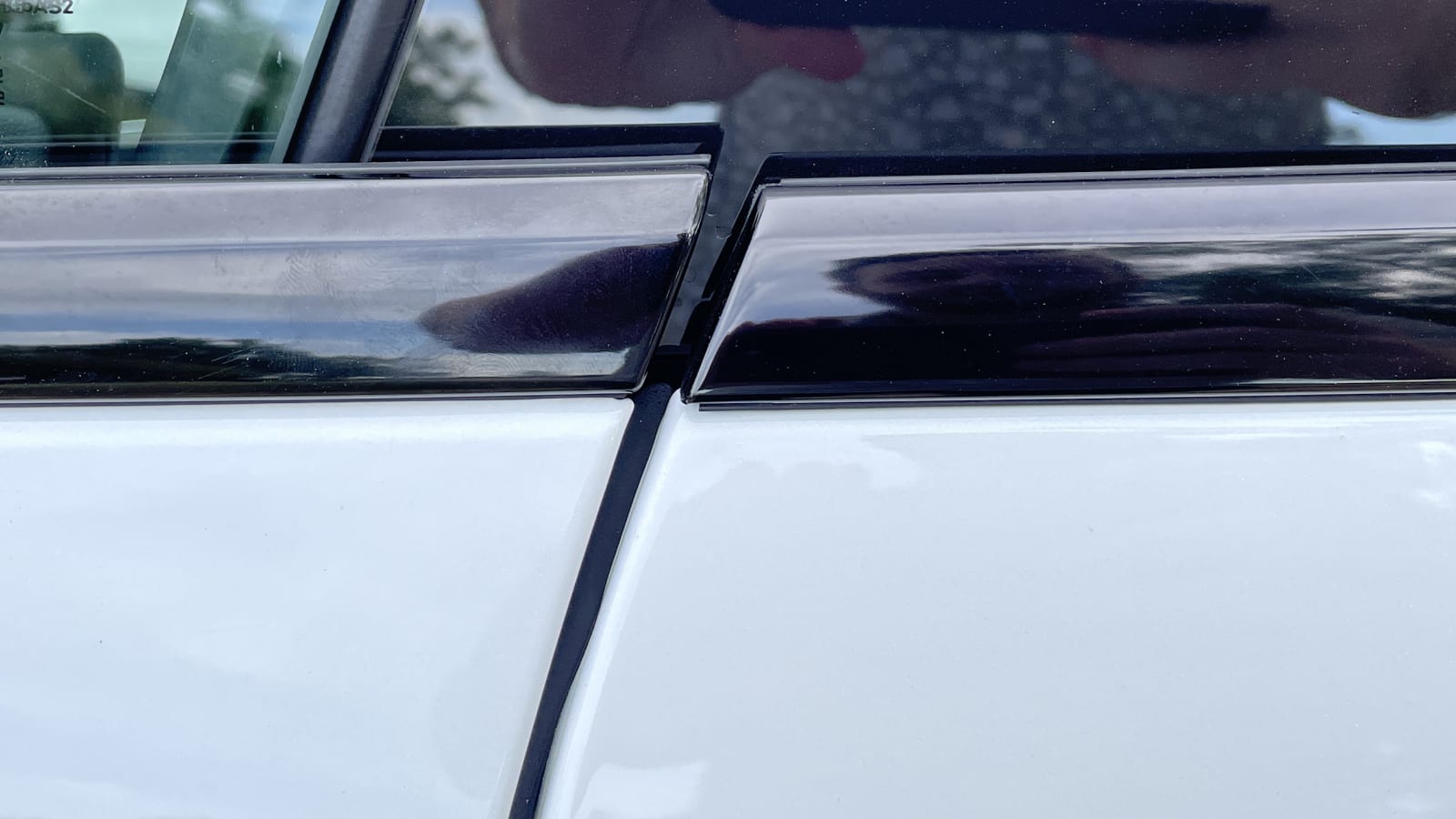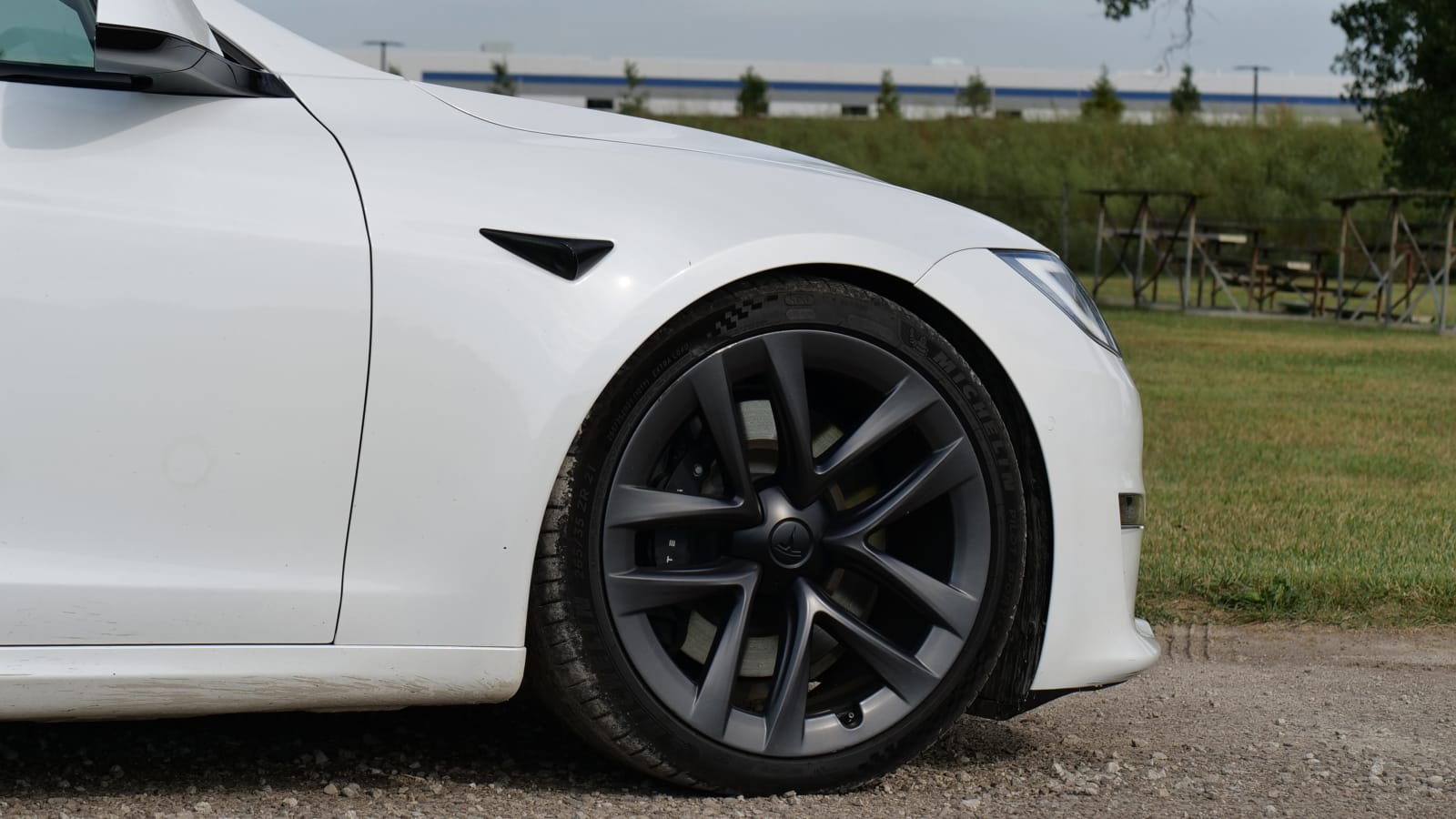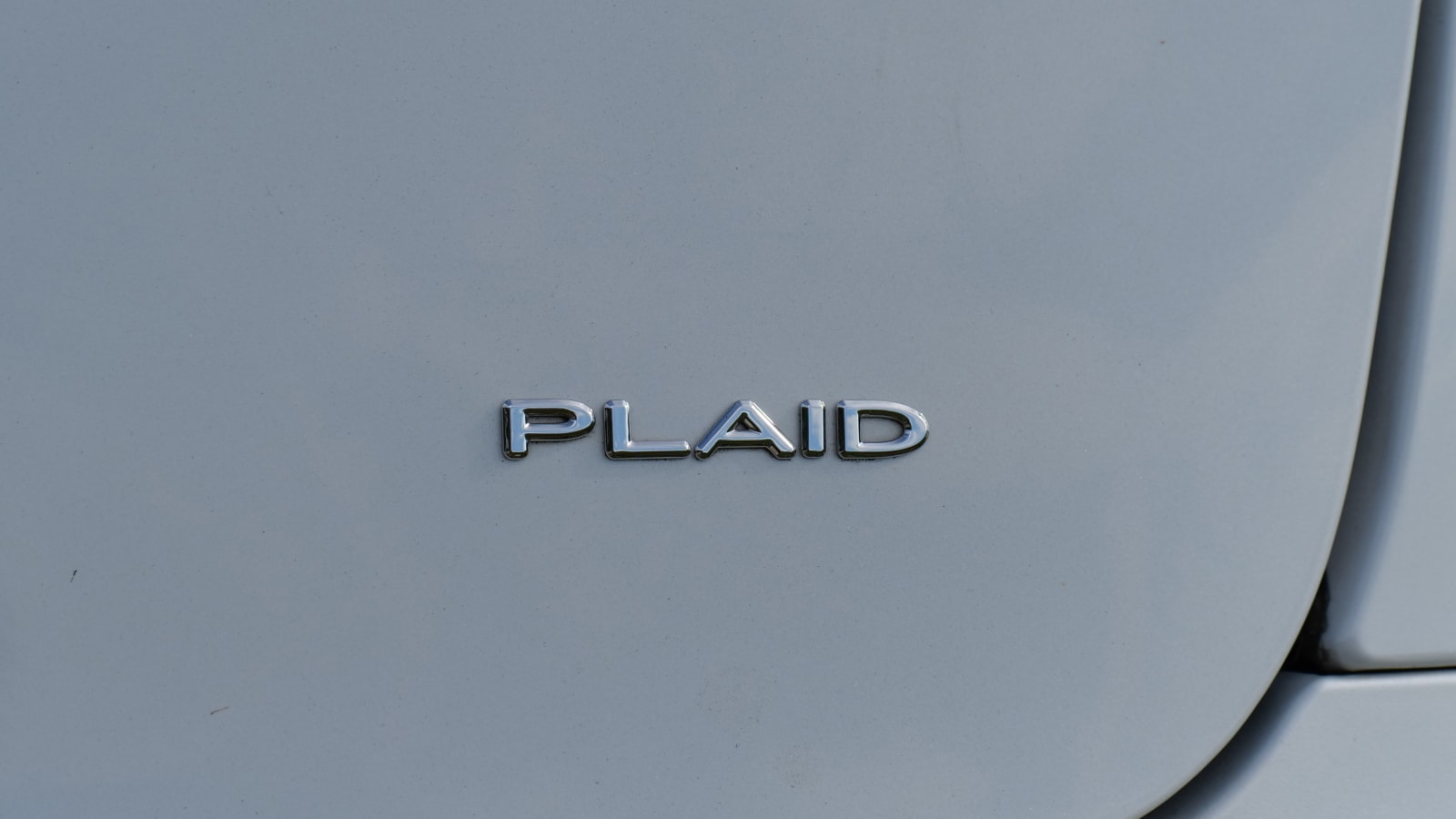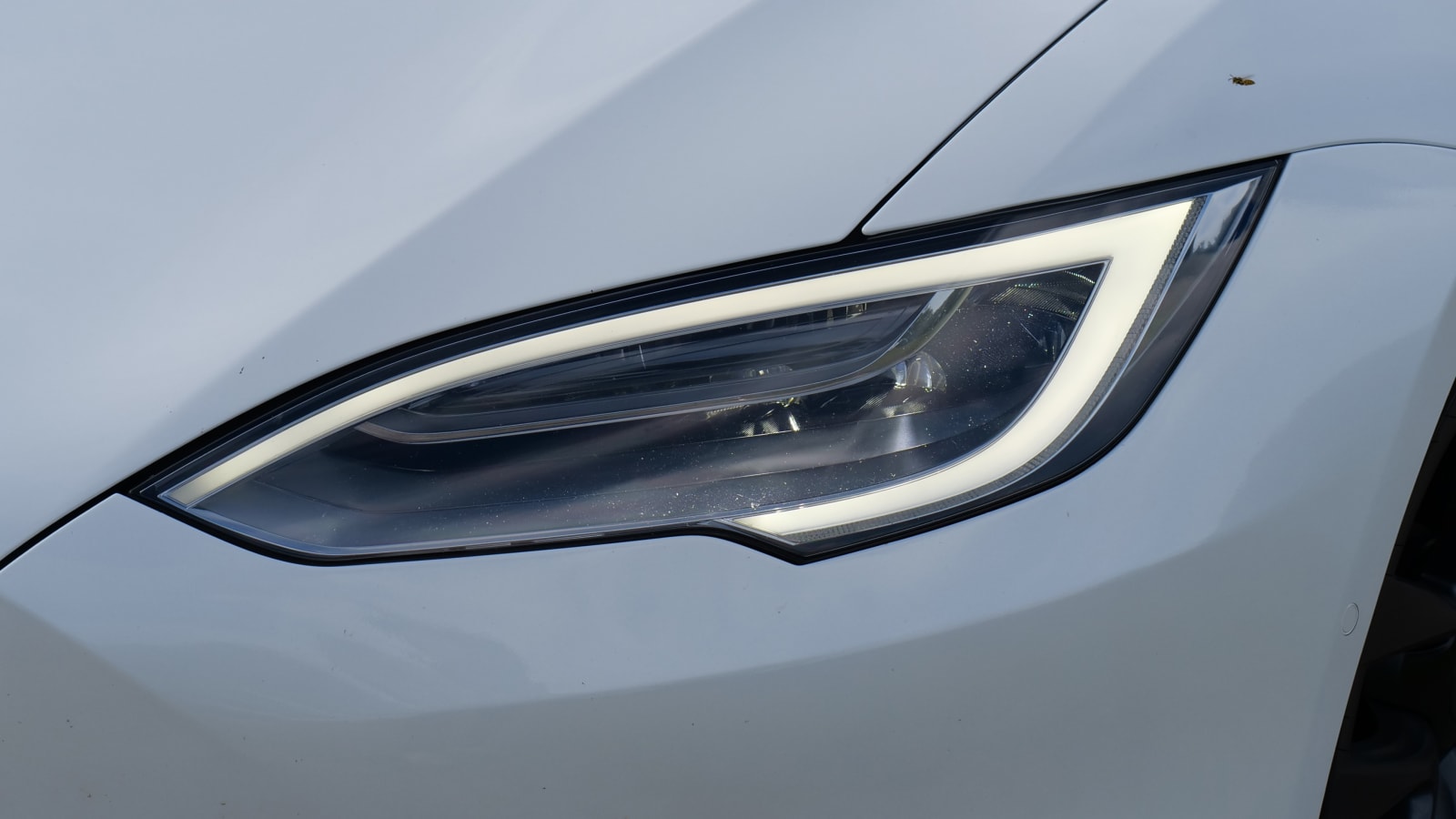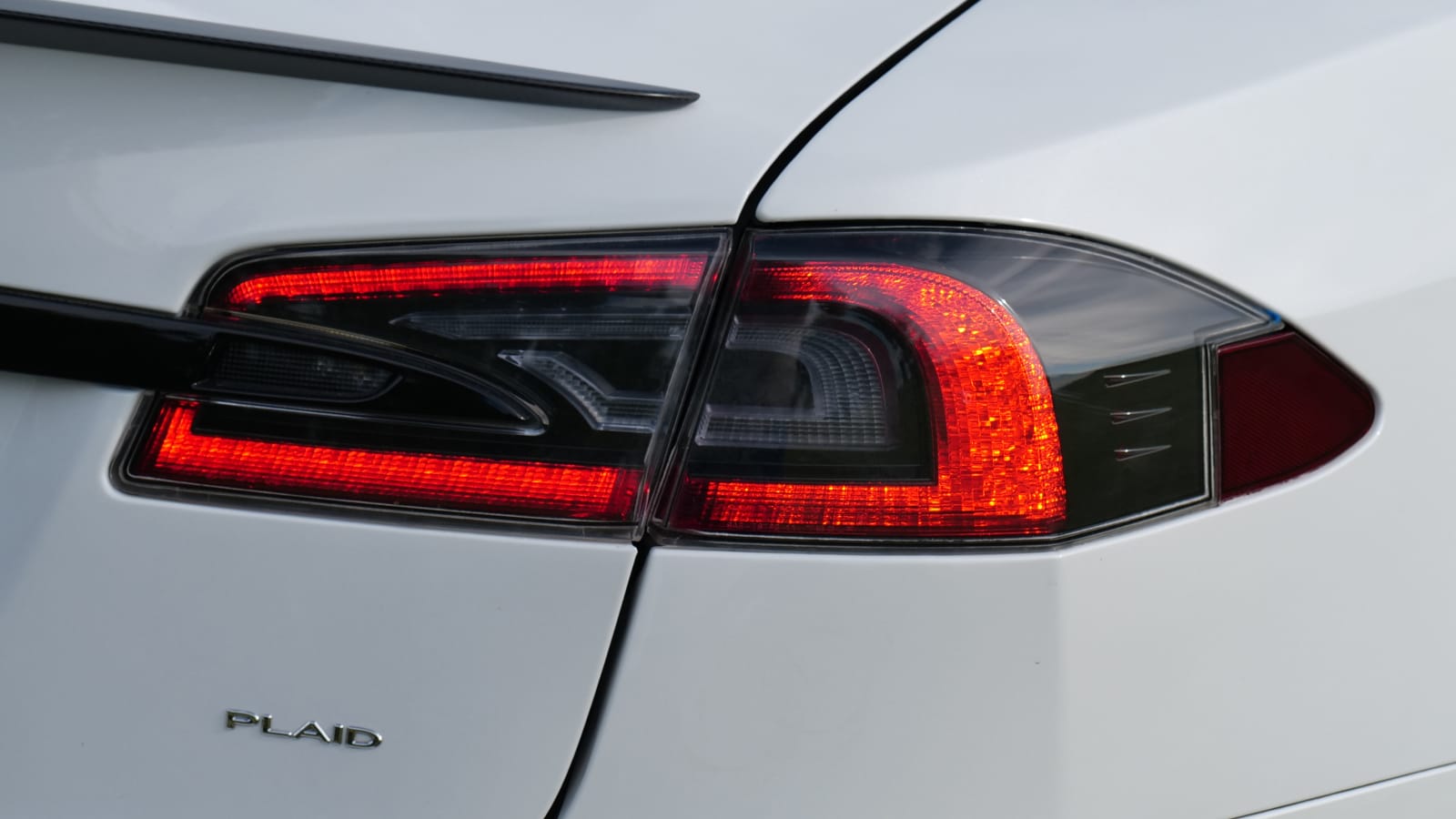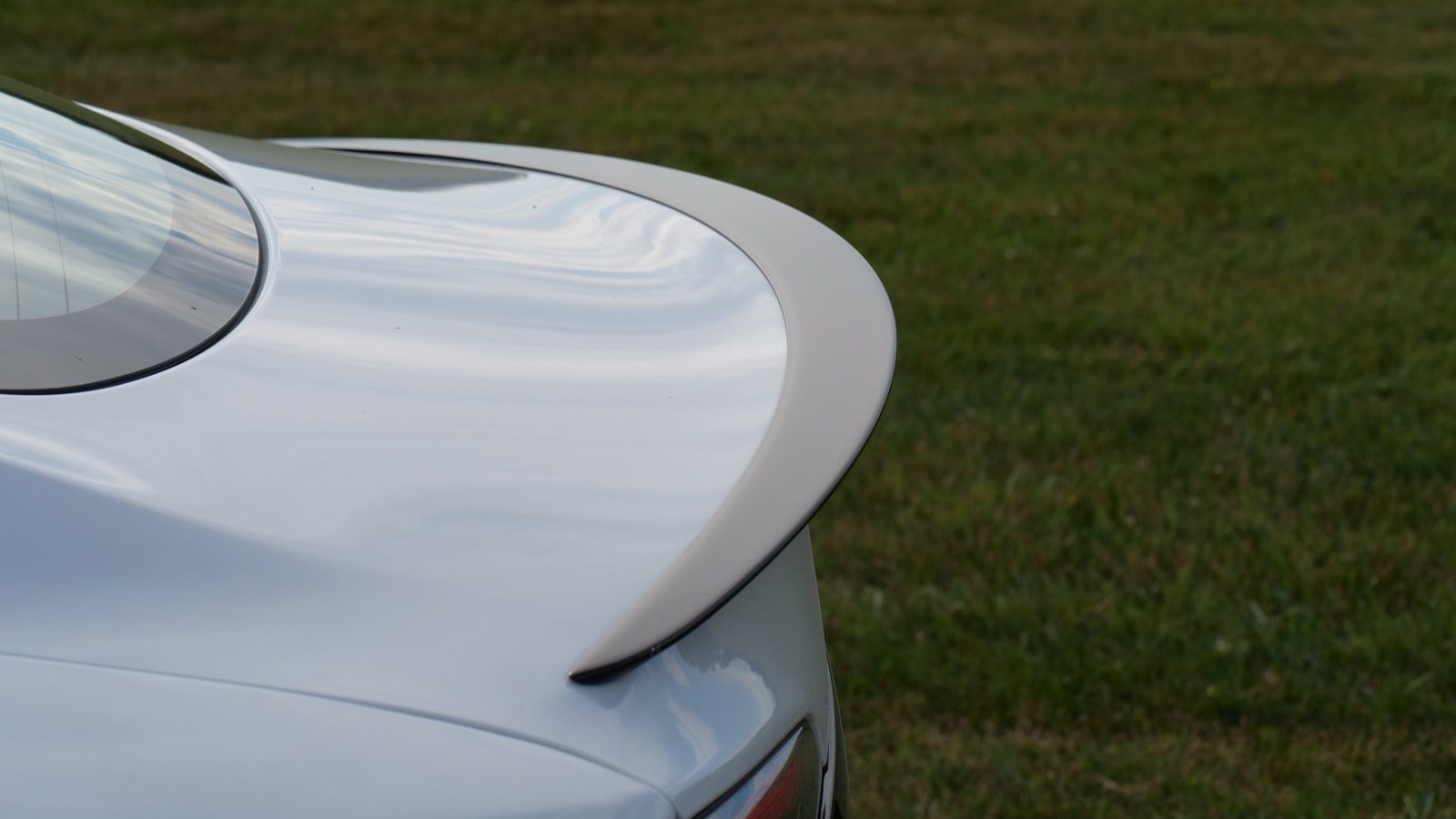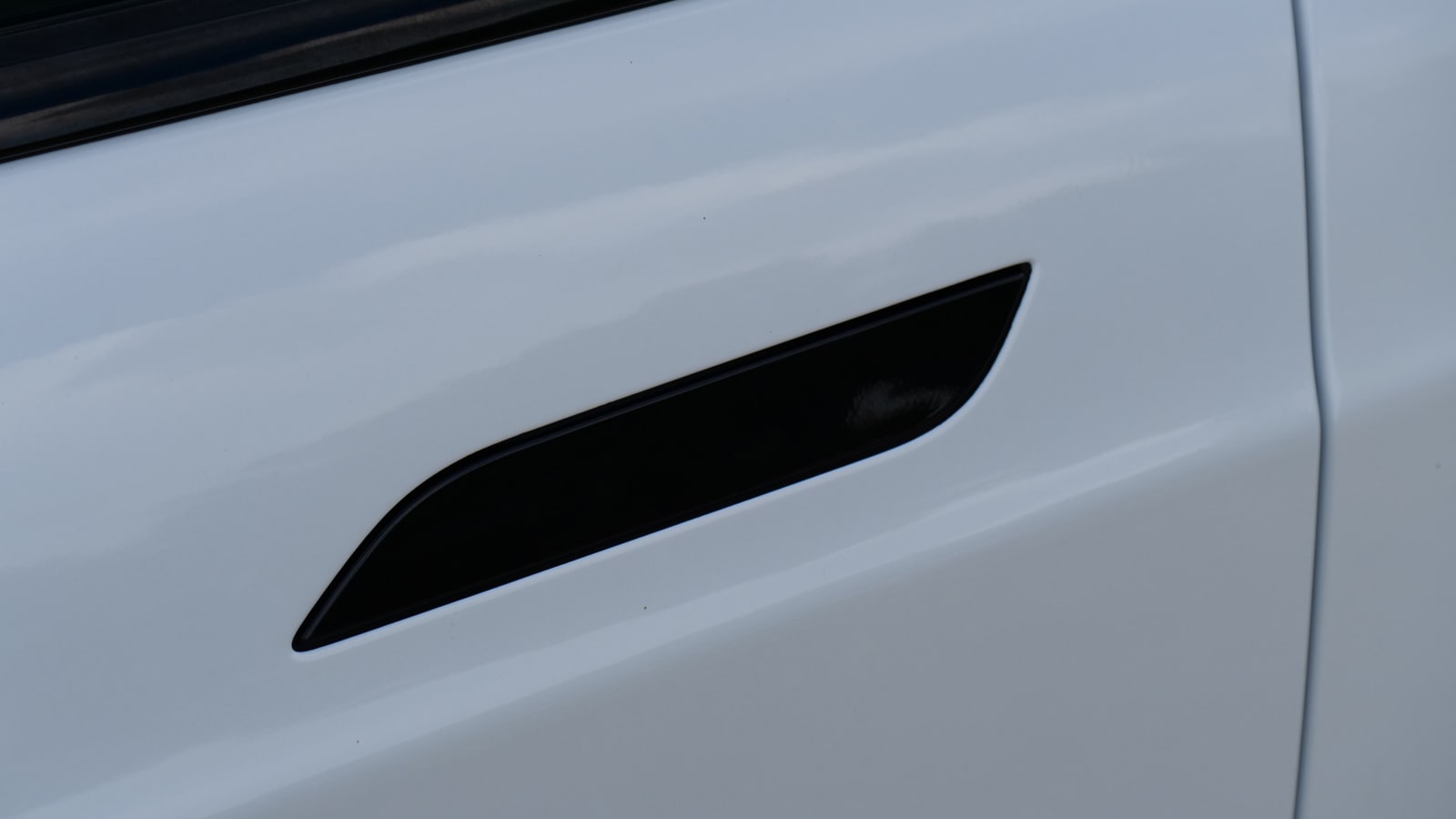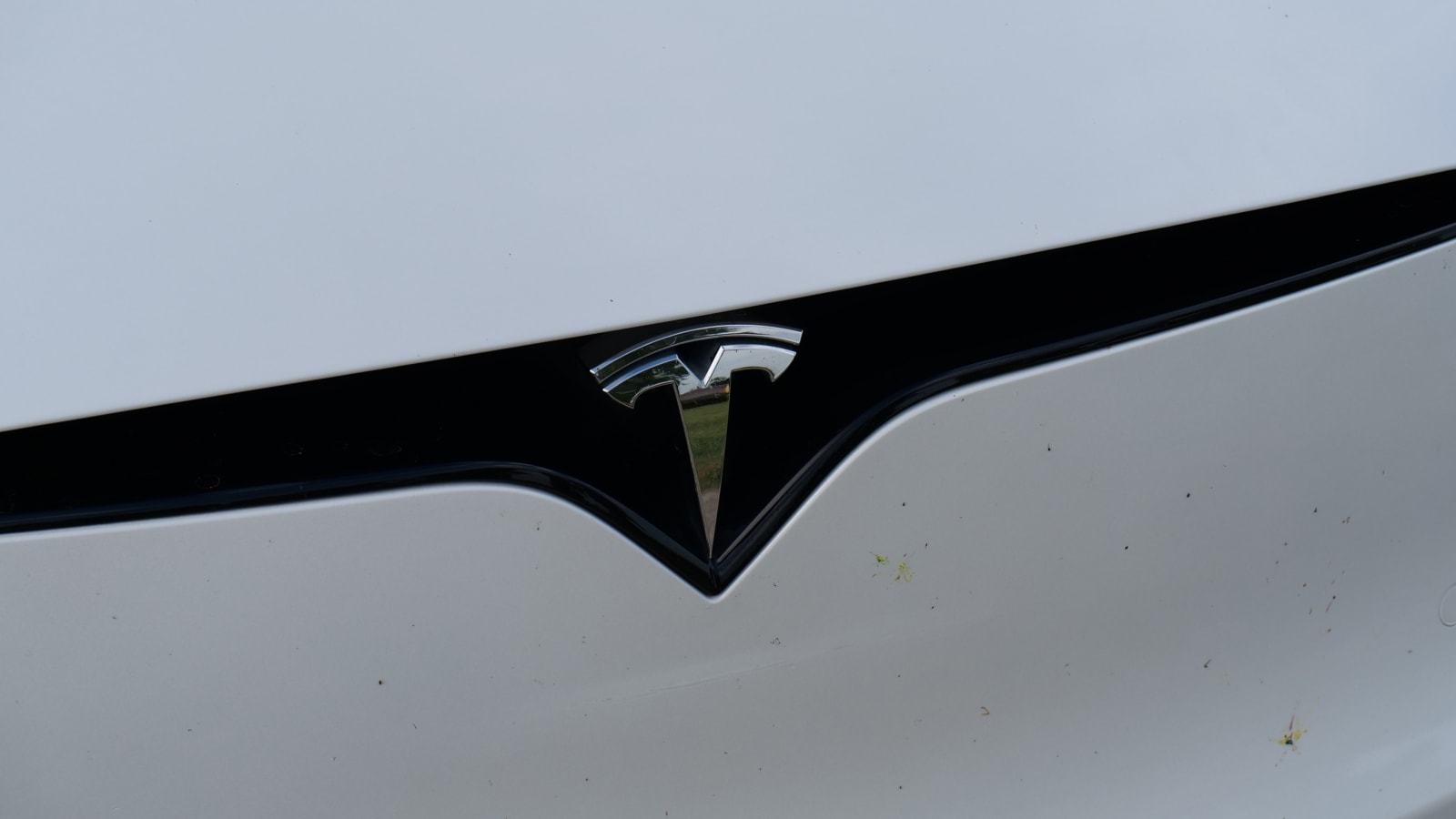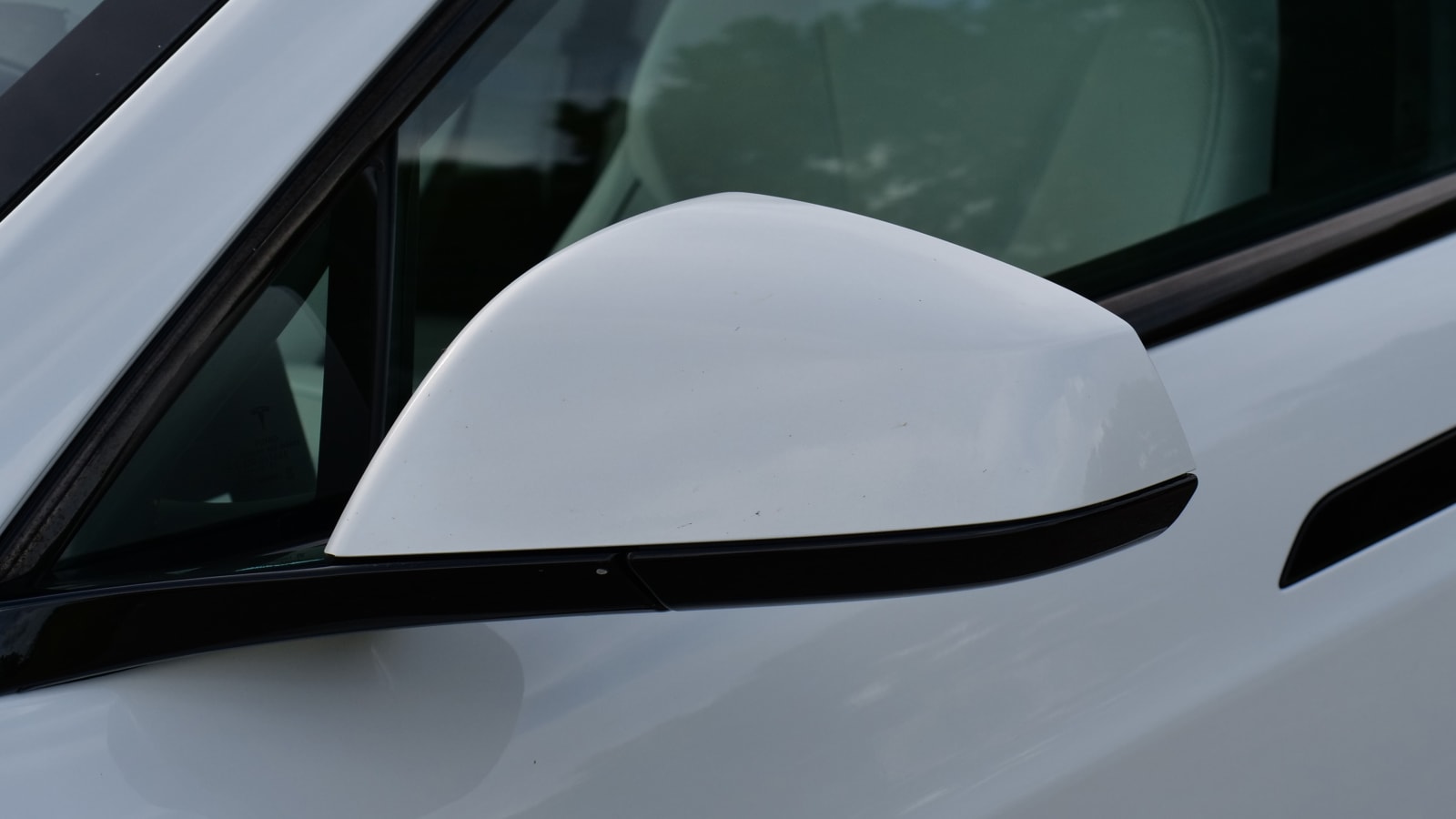Short of being a fighter jet pilot, an astronaut or a race car driver, it’s unlikely that you’ve experienced acceleration at the same level as the Tesla Model S Plaid. It’s dumbfounding. Mind-altering. Verging on uncomfortable. The speed at which nature passes you by through the windshield and the side windows is akin to pushing high triple digits in an old “Need for Speed” video game, watching the world bend and stretch around you in that game-ish way. It’s difficult to comprehend without being in the car and feeling it. We knew it was going to be ridiculous, but it still managed to catch us — journalists who drive quick cars all the damn time — completely off guard. There’s no denying it. The Model S Plaid is a special car, and its rapidity is guaranteed to shock you.
That acceleration is but one part of this big sedan’s stat sheet. The Model S Plaid has been on sale for a little more than a year, though we haven’t been able to get our hands on it until now. Since Tesla doesn’t provide test cars for review, we got this one through Turo (more on that experience soon). It’s the one and only Plaid available for rent in Michigan, so we snagged it for one day, which allowed us a maximum of 100 miles of driving. Despite the low mileage limit, we spent the entire day tinkering about, getting familiar with and learning everything we could about what it’s like to drive and operate a Model S Plaid. Just like getting a new phone, though, diving into the interior of a Tesla requires an acclimation period.
The new and weird hits right away with the yoke of a steering device. Our quick take? The yoke ain’t it. There’s only one thing it does better than a steering wheel, and that is to provide a superior, wide and flat resting place for your hands on long highway journeys. Beyond that, the yoke is inferior to a traditional steering wheel in every practical way.
If a turn is 90 degrees or sharper, making said corner is just plain awkward. Want to execute a quick turnaround maneuver? Instead of a convenient rim to grab and keep turning, you’ll find open air. And don’t even start to think that you’ll “adapt to it,” or “get used to it.” Given more time to really get the hang of operating the yoke, it would still be annoying and undeniably worse than a wheel when you need to go lock-to-lock. Even when you’re arcing the Model S through wide sweepers at speed and testing the handling, it is disconcerting. It’s never possible to adjust your grip upward or move your hand around the steering wheel from corner to corner, as one might want to do on a meandering road with slow and fast corners of differing radii. If you do shift position, that one hand loses contact entirely. We found ourselves gripping the yoke tighter and with a greater sense of self-preservation — a nagging fear that it’d whisk out of our grip never went away — than we ever have with a steering wheel.
Also worth noting: The yoke’s covering was largely worn off on our 19,000-mile Model S tester. And sure, perhaps that’s due to heavy hand sanitizer/Clorox use throughout this rental’s life in a pandemic, but it was a sad sight to see after just a year of use. We’ve rented other cars in the past year-plus with similar mileage that didn’t look anywhere close to this bad.
As for the digitized Ferrari-like turn indicators on the steering wheel, those worked better than expected. The Model S is smart enough to realize when you’ve put the indicator on in a merging situation versus signaling for a turn at a traffic signal. Without fail, the car would automatically turn off the signal right after completing a lane change, so a duplicate press was never necessary. Operating the windshield wipers in a similar manner — no stalk — wasn’t problematic either, mostly because you can just set the wipers to auto, and they’ll smartly do their thing. The touchscreen shifter worked well enough, but the “auto shifting” feature where the car is just meant to magically know which direction you want to head did not. We resorted to manually swapping between drive and reverse most of the time. And don’t worry, we tried out the silly sound effect “Boom Box” horn, too. Senior Editor James Riswick is right. It’s a public nuisance.
There really isn’t much to speak of throughout the Model S Plaid’s interior outside of the massive screens in front of our faces. Yes, screens. Plural. While the cheaper Model 3 and Y get one screen to rule them all, the Model S retains its digital instrument cluster. A head-up display (HUD) would be a welcome addition, but apparently you can only ask for so much with an approximately $150,000 luxury sedan. In all fairness, companies like Porsche and BMW will force you to pay extra for luxuries like a HUD, but at least they offer it.
The yoke affords an uninterrupted view of the minimalist cluster screen, but due to its width, it actually blocks your view of the bottom right corner of the infotainment system. We’ll call it a zero-sum game for yoke visibility gains and losses, as the blockage of the screen makes it such that you need to peer around the yoke to see the climate control button and the main vehicle settings menu quick toggle. Directly below the main infotainment system are a pair of wireless phone chargers that charged our phones quickly and never overheated them — take note, BMW. Really, offering two wireless phone chargers in luxury cars should be a more common feature. Your passenger might not have a cord with them 24/7.
Since this Model S is the Plaid, it gets the sporty carbon fiber trim all over the dash, doors and center console. It’s subtle, as far as carbon fiber trim goes in luxury performance cars, favoring a matte finish as opposed to the glossy carbon you’ll find all over European luxury cars. The white seats that contrast with the black trim in this Plaid were less white and more stained at this point. Again, that’s after 19,000 miles and about a year of use as a rental car. Unlike that yoke, this may be more typical for cars with white leather interiors. Either way, anybody who is thinking of ticking the box for the white interior should consider this propensity for staining before doing so.
And if you were curious about other build issues, yes, the Plaid lived up (well, down) to Tesla’s reputation with mismatched panel gaps (it was particularly poor where the hatch and fender meet) and misaligned trim. The glossy black window trim was embarrassingly lopsided, and that’s something you’ll see every time you get in and out.
Your seating position is up high for a performance-oriented sport sedan, but it’s at least consistent with other EVs. The battery pack under the floor tends to push everything upward in EVs, which in turn makes visibility over the low hood excellent. We can say the same for the view out the sides, but looking through the narrow rear window is distorted. Finding a comfortable seating position requires using the touchscreen – there were regular seat-mounted controls in the original Model S interior. We can’t say this is progress.
How the Plaid drives and responds to the road is largely dependent on how you set it up via the drive mode selections. Accelerating in “Chill” mode makes this tri-motor EV feel more like a Nissan Leaf from a standing start. Pop it into “Plaid” mode, and forget about hanging onto your butts, because you’ve already left them at the last stoplight by the time you realized they’re gone.
The ludicrous (see what we did there?) part about taking off in the Plaid is that going full throttle in “Plaid” mode results in acceleration that is already going to change your perspective about what it means to be quick. Somehow, using the Drag Strip Mode (it requires an approximately 10-minute preconditioning program to run for the battery and carbon-sleeved motors) makes those previous “Plaid” mode pulls feel normal. Its “Cheetah stance” ritual where the air suspension puts you into a lowered launch position sure does amp up the drama beforehand. The warp speed animation in the cluster that pops up on takeoff might look childish or silly (Genesis does a similar thing with the GV60’s Boost function), but one acceleration run will have you thinking it’s apt. The big Tesla’s weight doesn’t show at all when under acceleration, but it makes an abrupt appearance when cornering and braking.
The brakes offer an assuring stiffness from the pedal, but this big sedan doesn’t slow down with as much enthusiasm as its straight-line performance might suggest. Handling is par for the course when it comes to big grand tourers, but with the usual electric twist. Its low center of gravity imbues confidence to send it into a corner with speed, and the Michelin Pilot Sport 4S tires make sure you don’t run out of grip. That said, the Model S Plaid feels a bit unsure of itself and a little twitchy when you start pushing harder. On one long highway cloverleaf, we actually heard and felt the front tire under load briefly rub against the wheel liner. That isn’t supposed to happen! We’re left with the fairly obvious conclusion that the Plaid is no sports car with sports-car handling. We also weren’t expecting it to be. The yoke also does more to hurt matters here, as it seems to require a lot of minute steering inputs, and the width of the yoke itself is just plain awkward to contend with when you’re pushing this stupid-quick EV down a twisty road.
Dial everything back to full comfort, and while the Plaid offers nothing close to the refinement and ride control of a Mercedes-Benz EQS, it’s no penalty box either. A couple stints on Michigan’s rough highways tells us that the Plaid will be a relatively comfortable cruiser, but for its price, you can do much better (for instance, an EQS). Ambient noises and road noise isolation are subpar for its luxury car price. Just as the interior materials are worse for wear after 19,000 extra-hard miles, this Model S suffered from a few different rattles and vibrations that were either constant or intermittent throughout our whole time with the car.
About 50 of our 100 miles were spent on the highway, so we spent as much time as we could testing out Autopilot. This particular car was equipped with Tesla’s “Enhanced Autopilot” and the “Full-Self Driving Capability” options. We’ll note here now that there are no full-self-driving cars for sale today, including this Tesla Model S. “Full-Self Driving Capability,” as it’s called by Tesla, is simply an advanced driver assistance system — emphasis on assistance — because you still need to give the car your 100% undivided attention and keep your hands on the wheel. We wish that this car had the FSD Beta activated so that we could’ve given that a whirl, but it did not.
As driver assistance systems go, Autopilot behaved quite well. Its ability to trace an accurate path through curves is top notch, right around the same level as GM’s Super Cruise technology. The “Navigate on Autopilot” portion of the system works as advertised. Input a destination and the Model S automatically merges over into the exit lanes and highway interchanges for you, all while automatically passing slower cars on the way there. Super Cruise can’t do that. If there’s a fault to be found here, it’s the aggressiveness at which it tries to merge. On multiple occasions, the car would flip the turn indicator on as someone was creeping into our blind spot. It wouldn’t move over into that car, but that’s enough to spook someone into thinking they’re going to merge into you, and it just feels rude.
Also of note, everybody you see in a Tesla who is paying zero attention to the road ahead of them — and we see a lot of them — is a serious road hazard and accident waiting to happen. We had to take the wheel and yank it away from semi trucks on multiple occasions, and there was another misstep where the car meandered out of its lane on a curve, coming far too close to traffic in that lane. In the end, we’re left with the impression that Autopilot is one of the most advanced driver assistance systems out there, but like most systems in cars today, it still needs nannying. We’d much rather eat up highway miles in a Cadillac Escalade or GMC Sierra on Super Cruise, and GM’s driver attention safeguards mean we’d rather share the road with them as well.
As for the other tech in the car, the Model S features one of the more intuitive and easier-to-use infotainment systems. The screen is easily the quickest to load and features the best response times of any other infotainment system out there, which is brutally necessary, as there are no hard button shortcuts for often used controls. Mapping out a route with Tesla’s Supercharger network is an amazingly seamless experience, and while we didn’t get to sample the network in the 100 miles of driving, it’s still a big advantage for Tesla over the patchwork charging networks you’ll find when trying to charge anything besides a Tesla. Despite all of these pluses, we’re still sad to see the total lack of support for either Apple CarPlay or Android Auto.
We haven’t even mentioned range yet, but know that the Plaid with 21-inch wheels as tested here is currently EPA-rated for 348 miles on a full charge. Real-world range tests have shown the Model S doesn’t actually cover as much ground as it’s rated for, as opposed to other EVs that tend to outperform their range ratings. It’s still hard to critique the Model S too hard here, though, as even a lower number would be outstanding when compared to other high-performance electric vehicles.
After stepping out of the Plaid for the last time, we’re left feeling that this is a car of multiple stories. You can utterly trounce anything else on the road in a straight line. It handles well enough for its size and class, and the tech really does deserve a lot of the praise it receives. That said, anybody turning in a similarly-priced luxury car for a Model S Plaid is going to be seriously disappointed in the interior quality, luxury and overall design. Cars with similar price tags, including the electric Mercedes-Benz EQS, Lucid Air and BMW i7, have interiors that look and feel like they should cost that much. Tesla’s flagship does not. The yoke can’t go away quickly enough, and Autopilot is no glorious godsend of a system that perfectly assists you in every situation. In many ways, the Plaid is very much the quintessential American muscle sedan with a dash of luxury tossed in on the side. Big on flash, bang and speed. Everything else … well, it’ll do.
Related video:

